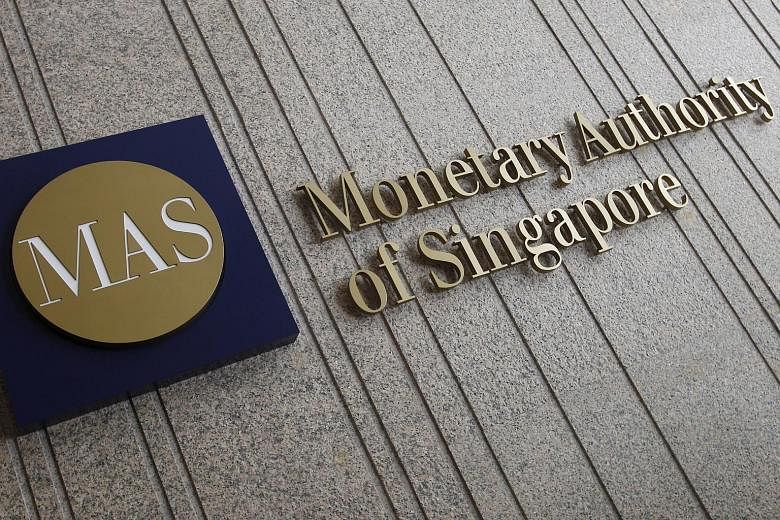SINGAPORE (BLOOMBERG) - Singapore's dollar fell the most since January, dragging down other Asia-Pacific currencies, as a surprise easing by the central bank fueled speculation other policymakers in the region will follow suit.
The Singdollar dropped for a second day after the Monetary Authority of Singapore (MAS) said it will seek a policy of zero appreciation against an undisclosed basket of currencies, returning to a neutral stance it adopted during the global financial crisis in 2008.
New Zealand's dollar and the Malaysian ringgit also slumped as Singapore's central bank cited "a less favourable external environment" in its policy statement.
"Today's decision by the Monetary Authority of Singapore has put downward pressure on currencies in the Asia-Pacific region to some extent," said Mr Hirofumi Suzuki, an economist at the treasury department of Sumitomo Mitsui Banking Corp in Singapore. "Some market participants fear a revival of a competitive currency devaluation."
The Singapore dollar weakened 0.8 per cent to S$1.3619 against the US currency as of 11.12am local time, the biggest decline since Jan 4. It has still risen 4.2 per cent this year.
The ringgit tumbled 0.9 per cent to 3.9080 per US dollar, the won slid 0.7 per cent to 1,153.70 and Indonesia's rupiah dropped 0.6 per cent to 13,245. New Zealand's dollar fell 1 per cent to 68.53 US cents and Australia's declined 0.4 per cent to 76.24 US cents.
"This surprise move indicates a gloomy outlook for regional trade," SMr ean Callow, a senior foreign-exchange strategist at Westpac Banking Corp in Sydney, wrote in a report. "It should be noted with concern by the likes of the" Australian and New Zealand central banks, he said.
The MAS had a policy of modest and gradual appreciation of the Singapore dollar against its trading basket in the past six years. The economy stagnated in the first quarter from the previous three months, when it expanded 6.2 per cent on a seasonally adjusted, annualised basis, the Trade Ministry also reported on Thursday.
"There's been a deterioration of economic conditions since the last meeting," said Mr Philip Wee, senior currency economist at DBS Group Holdings in Singapore, who correctly predicted that the MAS would ease policy.
"If things have already worsened why wait for October to ease?"
This was the Singapore central bank's second unexpected decision in less than 16 months. It made an emergency policy change in January last year to combat the threat of deflation following a slump in oil prices. Twelve of 18 economists surveyed by Bloomberg predicted the central bank would maintain policy on Thursday, while the rest forecast it would ease.
MAS guides the local dollar against a basket of its counterparts and adjusts the pace of its appreciation or depreciation by changing the slope, width and centre of a currency band. It doesn't disclose details on the basket, or the band or the pace of appreciation or depreciation. The MAS has two scheduled policy announcements a year, one in April and the other in October.
"Although the MAS said that they have no intention to depreciate the domestic currency, I don't see this as necessarily the end of the easing cycle," said Mr Khoon Goh, a senior foreign-exchange strategist at Australia & New Zealand Banking Group Ltd. in Singapore. "If downside growth and inflation risks remain, then the next easing move would be a re-centring in October."

